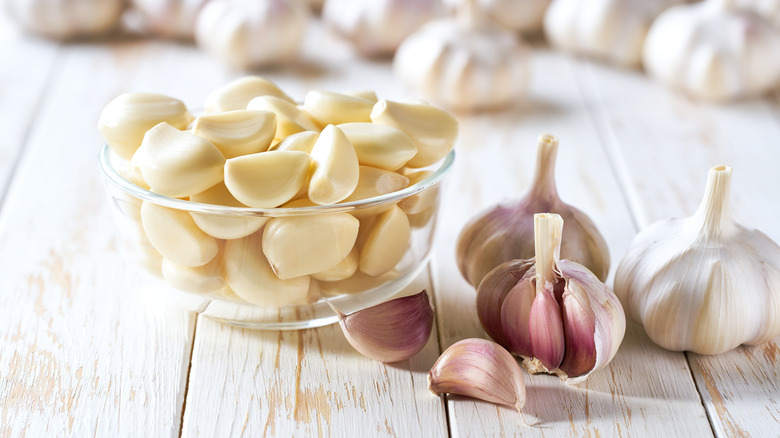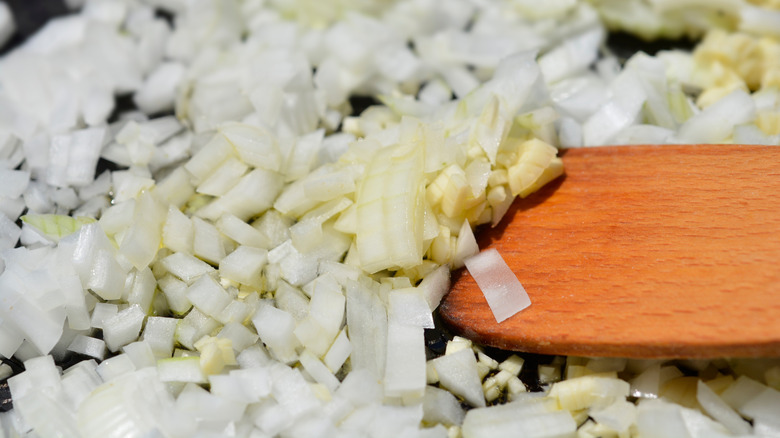Why Garlic Burns So Fast On The Stove, According To Science
After shows like "Lessons in Chemistry" from Apple TV+, the world knows a bit more about cooking alchemy. It's fascinating to see how science affects food preparation, especially in ordinary, everyday tasks such as cooking garlic on a stovetop. Who knew there's a whole little science lab sizzling in that pan, determining how those aromatic minced garlic cloves ultimately affect the meals you serve? Cooking alchemy seems magical in so many ways. However, when it comes to garlic, that magic can quickly poof into a culinary fiasco — relatively speaking, of course.
The minute you toss minced garlic into a hot stovetop pan, the tiny pieces are quickly on their way to sizzling and darkening, well before fellow veggie or protein pan-mates are done cooking. There's a reason they react so differently to the same heat levels, and it comes down to matters like chemistry, structure, and heat interaction. All those things ultimately speed up browning. That can mean garlic will start burning while you wait for other ingredients to catch up.
In the simplest terms, garlic has a lower moisture content (less water) and higher amounts of natural sugars than ingredients such as onions, which often accompany garlic in recipes. When introduced to heat, the water in garlic escapes more quickly, breaking down the sugars and causing them to brown instantly under scorching pan heat. That's especially true when garlic gets diced, since each piece gets more sizzling surface exposure.
A garlicky chain of events
Dicing garlic before cooking sets off a chain of events that's interesting to know. Cutting cloves releases an enzyme called alliinase. This reacts with a separate compound to create allicin, the source of the sharp aroma of garlic and its deep flavor. That pungency intensifies the more you break the cells through chopping and slicing, but it quickly dissipates when hitting pan heat.
In that marvelous minute before minced garlic begins to burn, you'll have deeply aromatic, complex, flavor with subtle sweetness. That's why you want to add this ingredient toward the end of a pan-frying session, giving other components ample time to cook. Tossing it in too early is one of the most common mistakes when cooking with garlic. You can also lower the heat before adding it. This will slightly extend the cooking time, but it's generally best to start adding liquid after about 60 seconds. Another trick is to chop, rather than dice, the cloves into larger chunks or even leave them whole if possible.
Keep in mind that these specific science-based chemical reactions apply only when exposing garlic to direct hot-pan heat. Adding fresh garlic to baked dishes, boiled soups, pasta sauces, or other slower-cooked foods typically eliminates the chance of burned, bitter, acrid garlic spoiling your dinner plans.

